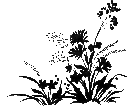 |
The Preserve |
Natural History |
The Trail |
Restoration |
Library |
News and Events |
Organization |
|
Todmorden Mills Wildflower Preserve
|
Todmorden Mills Wildflower Preserve NewsletterSpring/Summer 1995Report on October 16, 1995 Wetland PlantingThank you to all the many members and the Board of the Ontario Chapter of the Society for Ecological Restoration. It was fun and valuable to have foresters, botanists, landscape architects and biologists lend a muddy hand to the first plantings at the wetland. The plants chosen were the heavy duty maintenance types of plants which are quite reliable and hold soil and stabilize the site quickly. All of the plant material is indigenous to this area:
Seed of Awl-fruited sedge (Scirpus americanum), a Fox sedge (Carex annectans) and Black Bulrush (Scirpus atrovirens) were scattered one week later on October 22. In addition, two Sycamore trees (Platanus occidentalis) were donated by the City of Toronto (thanks Friends!). We are busy planning the viewing stand and signage for the new wetland as well as planning for the big party in September. If you would like to help with planning for the party please let us know. Restoration at the Todmorden Mills Wildflower PreserveStephen Smith, Urban Forest AssociatesTodmorden Mills is a restored historic village in Toronto's Don River valley. The site was first established as a lumber mill in 1794, later becoming a thriving paper and grist mill and a brewery until 1916. The fifteen-acre natural area is the remnant of Helliwell's Bush, named for one of the early owners. This natural area was designated the Todmorden Mills Wildflower Preserve in 1991 when a volunteer committee was formed to begin restoring the woodland. Habitats include a wet and dry meadow, riparian and upland forest, and a wetland in the old Don river channel. Historic accounts list the species found there as "massive" elms and sycamore; basswood, butternut, walnut, crab apple, black cherry, bur oak, and white cedar, with an understory of grape, currants, gooseberry, prickly ash, and trilliums. The slopes surrounding the site were towering white pine forests. The site has changed significantly from the old days through dumping of fill, forest clearing, planting or seeding-in of exotic species, and an expressway that now separates the site from the river. Salt spray from the expressway is a constant problem. Meadow areas are largely exotic legumes and grasses. The forest is predominantly Manitoba maple, crack willow, black locust, and european alder. Garlic mustard, common buckthorn, Norway maple, and dog-strangling vine are invading the understory of alternate dogwood, choke cherry, ash, zigzag goldenrod, avens, and Virginia waterleaf. Without the exotics, natural succession would probably have restored the site long ago. They are being removed slowly but present an ongoing problem with the modest resources available to control them. The restoration is being carried out by a volunteer committee headed by Dave Money, past president of the Ontario Horticultural Association (OHA). The goal is to restore the vegetation to pre-settlement conditions as much as possible. The volunteers work a half day per month to do plantings, weeding, plant rescues, trail clearing, and site preparation for plantings. Local residents donate plants they find growing in their gardens, Metro Parks grows some meadow species, and the Canadian Wildflower Society has been a regular contributor. A partnership has been established with the Rotary Club's Ecosystem Education Program to assist with planting, and some sustaining funding comes from the Toronto district of the OHA. The focus has been on planting native wildflowers in the meadows and forest understory, with some trees planted in the dry meadow as a barrier. Many of these plants are rescues from highway construction. Trillium, michigan lily, trout lily, marsh marigold, jack-in-the-pulpit, mayapple, shagbark hickory, sugar maple, walnut, and a wide variety of others have been planted in appropriate habitats. Dr. Mark Taylor, a noted Toronto biologist has prepared an overall concept plan for the site. A wetland enhancement will begin in fall 1994 to increase diversity of the aquatic habitat. The next step will be to deepen and replant the old river channel, now mostly Reed canary grass. ReferencesHerzberg, L., and H. Juhola. 1987. Todmorden Mills. A Human and Natural History. Toronto Field Naturalists. Smith, D. 1992. Restoration Project. Todmorden Mills. Heritage restoration and Wildflower Preserve. . Wildflower 8(3). Environmental Youth Corps StudentsThe Wildflower Preserve Committee is thrilled to have the assistance of two capable young people this summer thanks to Ontario's Environmental Youth Corps program. taraneh tashakoor is compiling lists of wildflowers from four of the habitats, and working on a display. Mark Kim is focussing on the new wetland. He has set up a monitoring program which will help us to determine the successes and problems for aquatic and riparian flora and fauna in the pond. Both students are gaining valuable experience in the field and making interesting contacts. the results of their work will be made available as soon as it is ready. |
| Copyright © 2003 Todmorden Mills Wildflower Preserve |